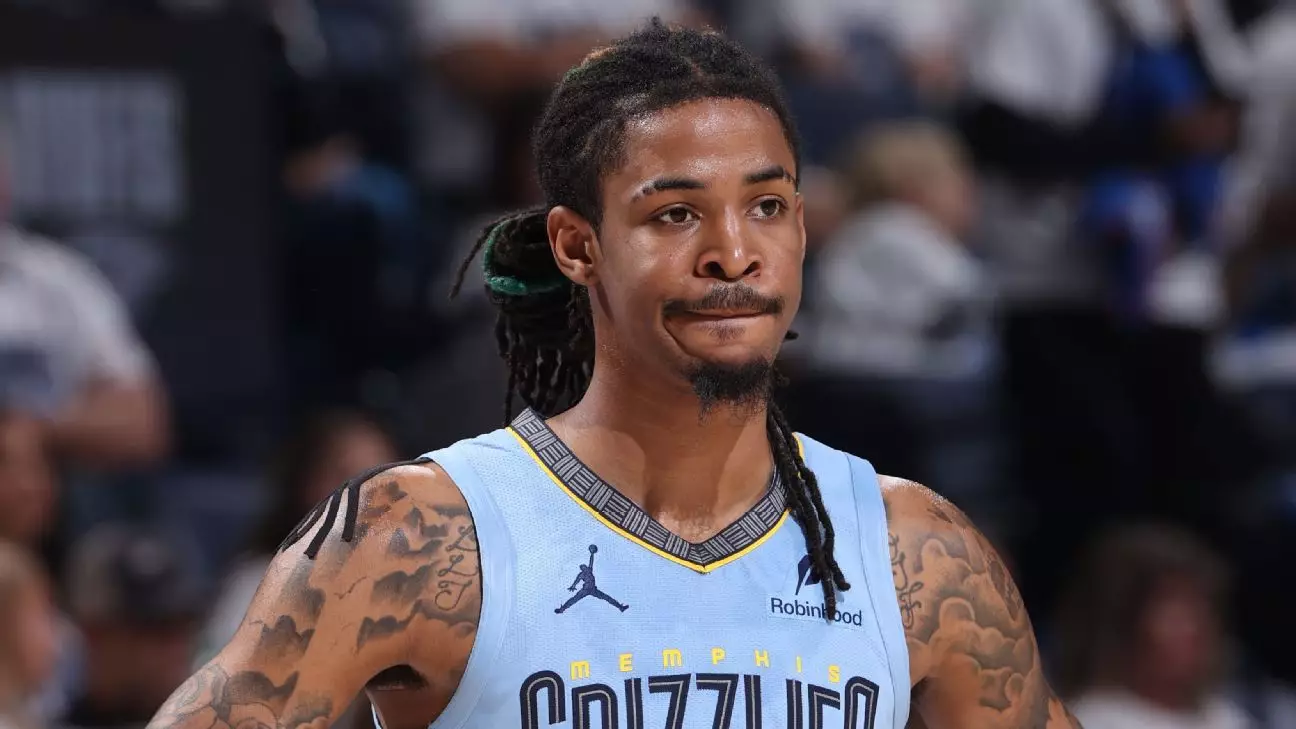In July 2022, a seemingly innocuous invitation turned tumultuous when two-time NBA All-Star Ja Morant faced off against a group of young basketball enthusiasts, including 17-year-old Joshua Holloway. This casual game at Morant’s parents’ home ended in an altercation that would become contentious enough to land in a Shelby County court. Holloway, now a college athlete himself, alleged that Morant lost his temper and assaulted him by throwing a punch during their pickup game. According to Holloway, a hostile interaction escalated when he unintentionally struck Morant with a basketball, initiating a series of physical responses that ultimately left him reeling on the court.
The situation exemplifies how quickly sportsmanship can devolve into personal conflict. However, what unfolded afterward raises significant questions about the boundary between aggression and self-defense, especially in a civil case involving high-profile individuals.
Legal Proceedings: Analyzing the Self-Defense Claim
The court proceedings captivate not just legal practitioners but also sports fans. Judge Carol Chumney ruled in favor of Morant, citing self-defense as a critical factor. Her conclusion posits that the law in Tennessee protects individuals under a “stand your ground” doctrine, allowing them to defend themselves when they feel threatened. The judge’s determination was bolstered by testimonies—including that from former NBA player Mike Miller, who stated Holloway throwing the ball at Morant was a pivotal moment. This quote underscores the notion of perceived threat, suggesting that Morant may have had grounds to retaliate based on his perspective.
In the jungle of competitive sports, where tensions often run high, the self-defense clause casts a long shadow that complicates accountability. The legal implication of this incident extends far beyond physical altercations on the court to touch on broader societal norms regarding violence, masculinity, and behavior in tense situations.
Contradictory Narratives: Who’s the Real Aggressor?
Holloway’s testimony recounted an experience where he felt victimized. He argued that Morant’s reaction was disproportionate. This narrative conflicts with Morant’s assertion that he acted out of fear after being hit with the basketball. The juxtaposition between the two accounts poses an intriguing dilemma—who indeed was the aggressor? Moreover, it introduces an element of realism; sports, especially those involving young males, are rife with bravado that can result in impulsive decisions and violence.
Judge Chumney’s reliance on witness credibility, alongside her determination that Holloway’s account lacked veracity, calls into question both the nature of witness testimony and the difficulties faced when emotions are involved. The fact that witnesses can have different interpretations of the same event shows how subjective interactions can be, especially when they involve athletes who may be emulating a culturally ingrained narrative of toughness.
A Lesson in Leadership
Despite the contentious circumstances and the ruling in favor of Morant, Judge Chumney offered crucial reflections on leadership. She highlighted that both Morant and Holloway hold positions of influence in their basketball communities, stressing that the expectations placed upon them extend beyond the court. In a culture often saturated with toxic masculinity, perhaps both parties must recognize their role as exemplars for youth, balancing competitiveness with respect and conflict resolution.
Morant’s stature as an NBA star places additional weight on his actions; his behavior is scrutinized relentlessly by fans and media alike. The incident undoubtedly impacts their growing legacies and their roles as leaders for aspiring athletes. The conversation ignited by this case can be pivotal, not just for Morant and Holloway but for the wider sports community that looks to them as models of conduct.
In a world that seems increasingly polarized over issues of violence, respect, and authority, the Morant-Holloway case acts as a microcosm for larger societal challenges. While legal battles often produce finite outcomes, they can generate critical dialogues about behavior, expectations, and personal accountability, urging us to confront the real implications of our actions both on and off the court.


Leave a Reply